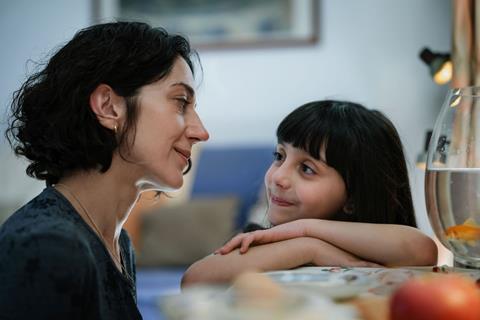BY SANDY GEORGE Screen International 8 DECEMBER 2023
Tehran-born filmmaker Noora Niasari tells Screen about balancing light and dark in debut feature Shayda

Australia’s Oscar entry Shayda first won over audiences at Sundance in January, where it won the audience award in the world cinema dramatic competition — and was scooped up by Sony Pictures Classics for North America. It has gone on to win further prizes, including the $65,000 (a$100,000) CinefestOZ film prize in September.
“Many people say, ‘It’s so authentic, it’s so honest’, and that’s beautiful, it’s what every filmmaker wants to hear,” says Tehran-born writer/director Noora Niasari. “But I had to dig into my childhood trauma every single day to bring that story to screen.”
Her memories, together with 50,000 words written by her mother, were the basis of the 1995‑set “quasi-autobiographical” story of Shayda (played by Zar Amir Ebrahimi), a woman sheltering from her husband Hossein (Osamah Sami) in a Melbourne refuge with her six-year-old daughter Mona (Selina Zahednia).
“Things happened [in real life] that some audiences wouldn’t be able to believe,” Niasari says. “At a certain point, we [Niasari and script editor Lynne Vincent McCarthy] started mapping out the movie by keeping whatever served the narrative and the cinematic experience. Sometimes reality is harsher than fiction and we had to balance the light and dark.”
Moments of beauty — Shayda framed in the style of a Renaissance painting, for example, or dancing with her daughter — offer respite from the tension emanating from her fear that the little girl will be abducted. Niasari praises the young actress for her ability to lock into the emotion of a situation, noting that Zahednia cried, unprompted, in her first audition before snapping out of those feelings the moment it was finished.
“Selina is incredibly special, so emotionally intelligent and present,” says the filmmaker. “She had a deep connection with Zar. From their first encounter, they were painting each other’s nails and playing games. They were in sync, they had undeniable chemistry.”
Niasari, a film graduate from Victorian College of the Arts in Melbourne, had directed several short films and the 2017 documentary Antunez House prior to making Shayda. Asal Daram, who she had cast as a 15-year-old for her 2017 short Waterfall, was employed as the director’s assistant on Shayda to help shape Zahednia’s performance.
“We did a lot of workshopping, a lot of play, a lot of puzzling out how we would get the performance we needed without traumatising her,” Niasari explains. “She never knew what was really going on [in the story]. We would create scenarios to get the reactions we needed, so we could protect her from the content. I wanted more than anything to retain her joy and unburdened innocence.”
In one scene, a frightened Mona looks out of the back window of a car. Zahednia was told an angry dog was chasing the vehicle whereas, in the film, it is her on-screen father. A double who could not speak Farsi was on set when the father character said things that were inappropriate for Zahednia to hear.
Niasari, script in hand, instigated meetings with several experienced producers before Vincent Sheehan from Origma 45 impressed her with his passion for the project. He brought in Cate Blanchett and husband Andrew Upton of Dirty Films as executive producers, giving financiers confidence. Investors included Screen Australia and The 51 Fund. Shayda also received backing from Melbourne International Film Festival’s Premiere Fund, and opened the Australian festival in August. SPC released for an awards-qualifying week in the US beginning December 1, ahead of a full rollout next year. Vertigo Releasing follows in the UK in March.
Niasari also acted as a producer on her debut feature. “There were cultural, personal and political aspects, and very real [potential] repercussions on my life, my family’s life,” she says. “I needed to be at the table, contributing to the discussions and being across every decision, creative or otherwise.”
Being a producer helped get Niasari what she wanted for the project, which included hiring Iranian-Australian cinematographer Sherwin Akbarzadeh — her regular collaborator and fellow feature first-timer — and an on-set therapist for the cast and crew, including herself. Midway through production, Niasari even started a transcendental meditation course.
“On a film like this, the pressure and emotional toll can be overwhelming,” she says. “You have to carve out time and set boundaries so you can also tend to yourself. Only then can you show up for the film and your team in the best way.”
Niasari intends Shayda to be the first of a trilogy of films about Iranian women — she is planning an adaptation of Iranian-American author Mahsa Rahmani Noble’s historical fiction novel Raya as the follow-up. The project was brought to her by Gary Foster, who is producing alongside Kate Fenske for Sister. Niasari and Foster first met in 2018 when Niasari heard Foster speak at an Australian conference.
“It was a life-changing encounter and Gary has been a mentor to me ever since,” Niasari says. UTA and FilmNation Entertainment are handling international sales on Raya, which is well underway. “We’ve cast the leads, we’re out to market and aiming to shoot in 2024 in Paris,” she says.